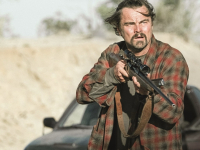
 What happens when you make a film about boyhood over 12 years? Let’s find out.
What happens when you make a film about boyhood over 12 years? Let’s find out.
A young boy deals with growing up without a steady father figure, and finds introversion and questions to be his saving grace. Later in his teenage years he finds passion in art and love but he learns not everything good lasts.
Boyhood is Richard Linklater’s 12 year project; filmed once a year with the same actors playing the same characters with Mason, played by Ellar Coltrane as the star. Due to the observational approach of the storytelling, the film is largely not prohibited by usual narrative restrictions meaning dramatic happenings and resolutions aren’t needed and aren’t present in any conventional sense. Linklater assumes Mason’s slow transformation into adulthood is supposed to be enough for the viewer, and it truly is. Watching the subtle changes of his character is captivating, even his evolving fashion trends and the use of early Coldplay to modern Arcade Fire all help create a fantastic and unique time stamp on the project.

Ellar Coltrane was filmed
over 12 years for the movie.
Linklater’s observational style also leads to the simple and uncluttered portrait of a developing man, with him checking whether there are elves in the world around the age of 11 and later discussing more serious issues like communication problems due to the Internet and particularly Facebook. His rants on this subject in particular are brilliantly typical of a young person thirsty for knowledge but this is rarely seen in fictional depictions of teenagers. We see his relationships develop with him meeting his first serious girlfriend only to be ditched later; a surprise for him as he thought she was the one. It’s all of these intimate moments that make his character so easy to identify with, as each of us has been through some similar experiences whether with love or endless curiosity as a child.
With Boyhood, Linklater has produced a gargantuan classic that is utterly unique in format and microscopic in focus. After the credits roll, you feel like you’ve witnessed your own child grow up and due t its naturalistic form, there is a sense that the story will continue on by itself.
Author – Matt, Cardiff store






